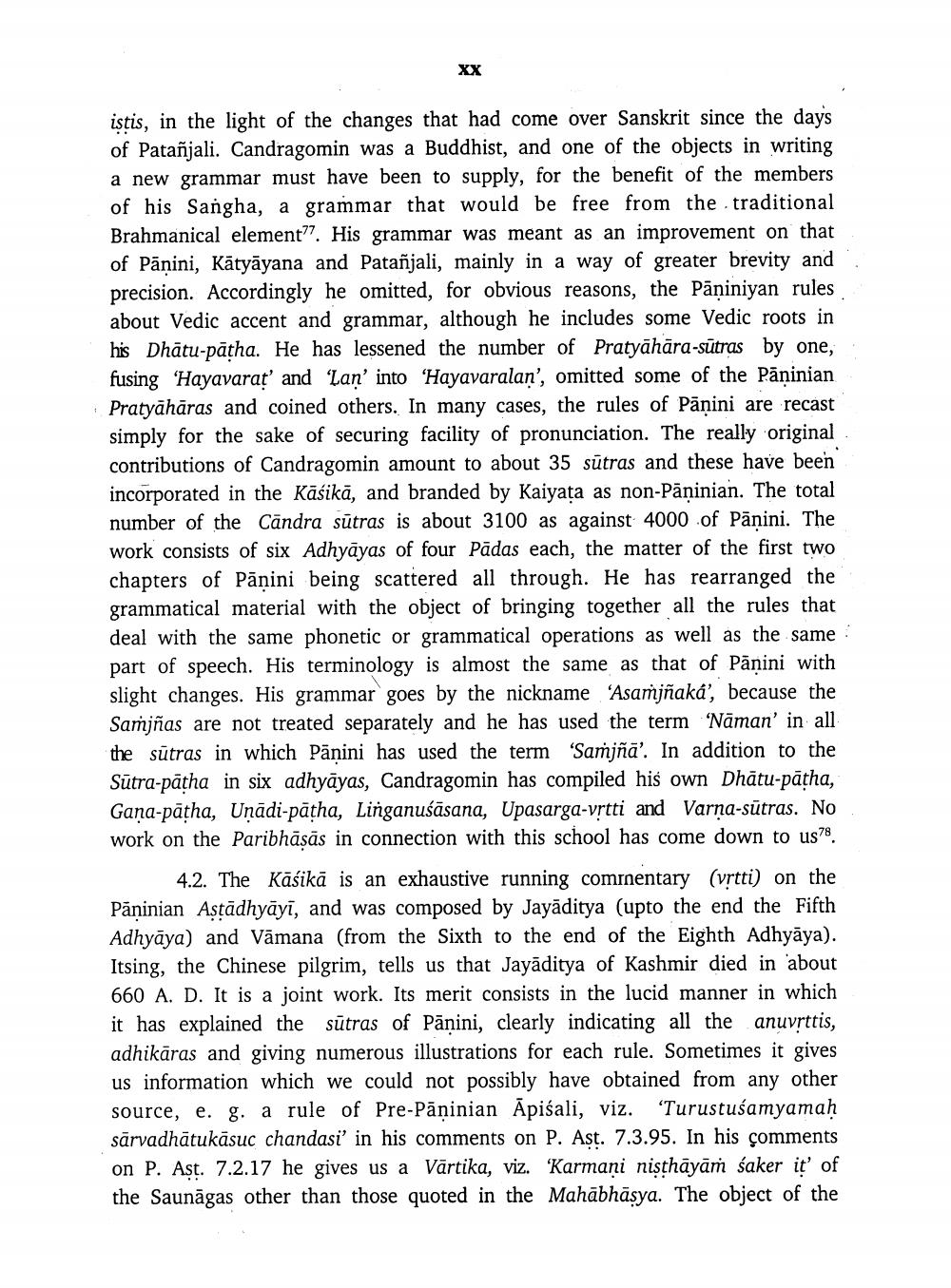________________ XX istis, in the light of the changes that had come over Sanskrit since the days of Patanjali. Candragomin was a Buddhist, and one of the objects in writing a new grammar must have been to supply, for the benefit of the members of his Sangha, a grammar that would be free from the traditional Brahmanical element77 His grammar was meant as an improvement on that of Panini, Katyayana and Patanjali, mainly in a way of greater brevity and precision. Accordingly he omitted, for obvious reasons, the Paniniyan rules about Vedic accent and grammar, although he includes some Vedic roots in his Dhatu-patha. He has lessened the number of Pratyahara-sutras by fusing 'Hayavarat' and 'Lan' into 'Hayavaralan, omitted some of the Paninian Pratyaharas and coined others. In many cases, the rules of Panini are recast simply for the sake of securing facility of pronunciation. The really original contributions of Candragomin amount to about 35 sutras and these have been incorporated in the Kasika, and branded by Kaiyata as non-Paninian. The total number of the Candra sutras is about 3100 as against 4000 of Panini. The work consists of six Adhyayas of four Padas each, the matter of the first two chapters of Panini being scattered all through. He has rearranged the grammatical material with the object of bringing together all the rules that deal with the same phonetic or grammatical operations as well as the same part of speech. His terminology is almost the same as that of Panini with slight changes. His grammar goes by the nickname 'Asamjnaka', because the Samjnas are not treated separately and he has used the term "Naman' in all the sutras in which Panini has used the term 'Samjna'. In addition to the Sutra-patha in six adhyayas, Candragomin has compiled his own Dhatu-patha, Gana-patha, Unadi-patha, Linganusasana, Upasarga-vrtti and Varna-sutras. No work on the Paribhasas in connection with this school has come down to us78. 4.2. The Kasika is an exhaustive running cominentary (vrtti) on the Paninian Astadhyayi, and was composed by Jayaditya (upto the end the Fifth Adhyaya) and Vamana (from the Sixth to the end of the Eighth Adhyaya). Itsing, the Chinese pilgrim, tells us that Jayaditya of Kashmir died in about 660 A. D. It is a joint work. Its merit consists in the lucid manner in which it has explained the sutras of Panini, clearly indicating all the anuvrttis, adhikaras and giving numerous illustrations for each rule. Sometimes it gives us information which we could not possibly have obtained from any other source, e. g. a rule of Pre-Paninian Apisali, viz. 'Turustusamyamah sarvadhatukasuc chandasi' in his comments on P. Ast. 7.3.95. In his comments on P. Ast. 7.2.17 he gives us a Vartika, viz. "Karmani nisthayam saker it of the Saunagas other than those quoted in the Mahabhasya. The object of the




